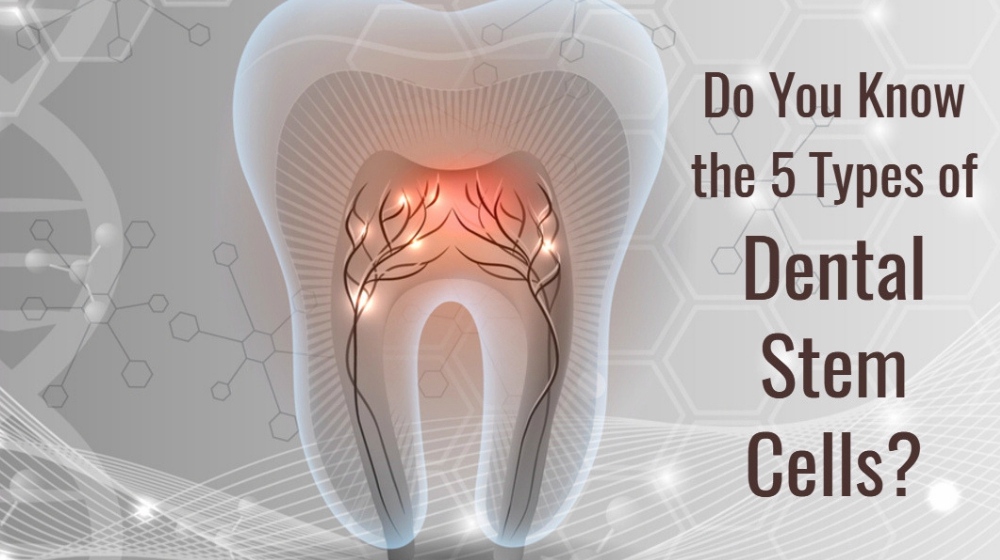Dental stem cells are stem cells present within the teeth or other oral structures. They are commonly sourced from the dental pulp, the soft area within the center of the tooth. These stem cells have many uses related to tooth regeneration and repair. They also have the potential to be used across of range of regenerative medicine applications, addressing ailments from bone injuries to heart disease and arthritis.
In this article:
What are Dental Stem Cells?
Dental stem cells are sourced from the teeth or the larger oral cavity. Dental pulp is the soft living tissue inside a tooth that contain a type of stem cell know as a mesenchymal stem cell (MSC).
The ideal time to harvest dental stem cells for research and practice is when children lose their deciduous (baby) teeth. This can either happen through loss or extraction.
While there are no FDA approved uses of dental stem cells at this time, these unique cells have the potential to be leveraged across a broad range of regenerative medicine applications.
5 Types of Dental Stem Cells
Thus far, five different types of stem cells have been discovered, as described below.
1. Dental Pulp Stem Cells (DPSCs)
Dental pulp stem cells in regenerative dentistry are stem cells isolated from the pulp tissue of extracted human third molars. They have the potential to cure various diseases by differentiating into neurons, osteoblasts, liver cells, and β cells of the islet of the pancreas, as well as dental- related problems such as:
- Human exfoliated deciduous teeth
- Apical papilla
- Periodontal ligament
- Dental follicle tissue [1]
2. Dental Follicle Progenitor Cells (DFPCs)
The dental follicle is a loose mesenchymal tissue surrounding the developing tooth germ which participates in the formation of periodontal progenitor cells.[2]
3. Stem Cells from Apical Papilla (SCAP)
Mesenchymal stem cells (MSCs) are present in the apical papilla of permanent immature teeth. MSCs are a type of adult stem cell that can reduce inflammation, reduce scarring (fibrosis), and improve immune function, giving them great potential for use in regenerative medicine.
Apical papilla differs from dental pulp because they contain less cellular and vascular components. According to researchers, cells in apical papilla also have greater proliferative capacity than those in pulp (2-3x greater).
4. Periodontal Ligament Stem Cells (PDLSCs)
Periodontal ligament stem cells are stem cells present in the perivascular space of the periodontium, the tissue that surrounds the teeth. They are responsible for the regeneration of periodontal components, including the periodontal ligament, alveolar bone, and cementum.
5. Stem Cells from Human Exfoliated Deciduous Teeth (SHED)
Stem cells from human exfoliated deciduous teeth (SHED) are mesenchymal cells present within exfoliated deciduous tooth pulp tissue that can differentiate into a broad range of different cell types.
These cells can become:
- osteoblasts (bone cells)
- adipocytes (fat cells)
- neurons[3]
To learn more, view “Key Competitors in the Dental Stem Cell Storage Market [Brief + Database].”
If you found this blog valuable, subscribe to BioInformant’s stem cell industry updates.
Footnotes
[1] NCBI.NLM.NIH.gov. (2015). Human dental pulp stem cells: Applications in future regenerative medicine. [online] Available at: https://www.ncbi.nlm.nih.gov/pmc/articles/PMC4478630/.
[2] Sciencedirect.com. (2017). Dental follicle – an overview | ScienceDirect Topics. [online] Available at: http://www.sciencedirect.com/topics/medicine-and-dentistry/dental-follicle.
[3] Discovery.lifemapsc.com. (2017). Stem cells from human exfoliated deciduous teeth (family) – Adult Stem / Progenitor Cell – Tooth – LifeMap Discovery. [online] Available at: https://discovery.lifemapsc.com/stem-cell-differentiation/in-vitro-cells/tooth-homo-sapiens-stem-cells-from-human-exfoliated-deciduous-teeth-family.
